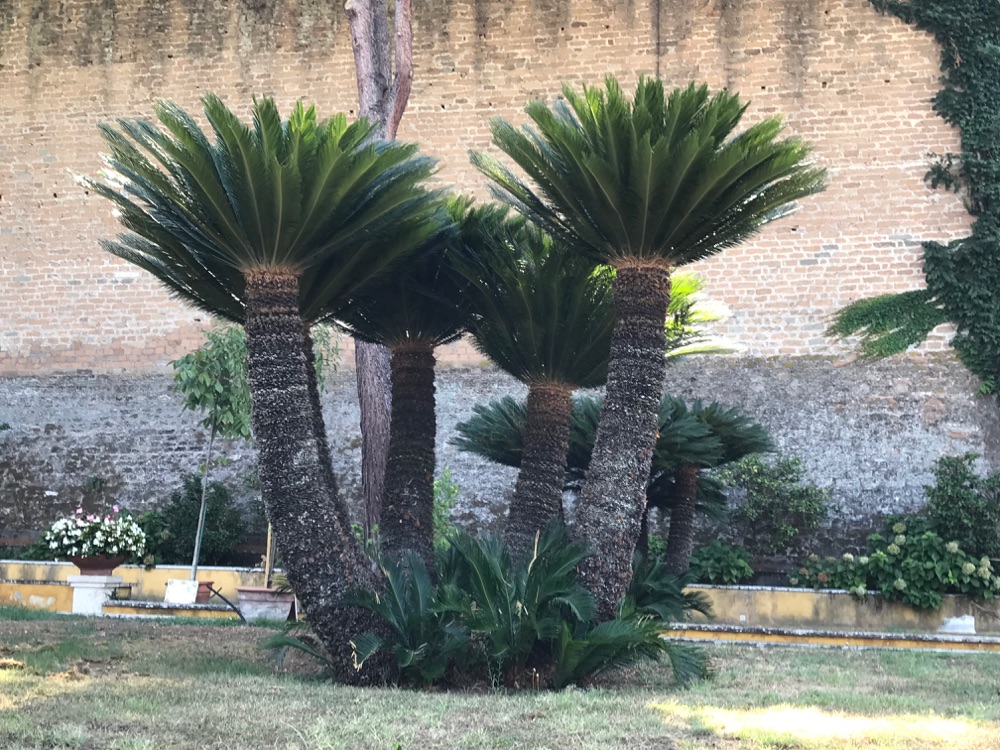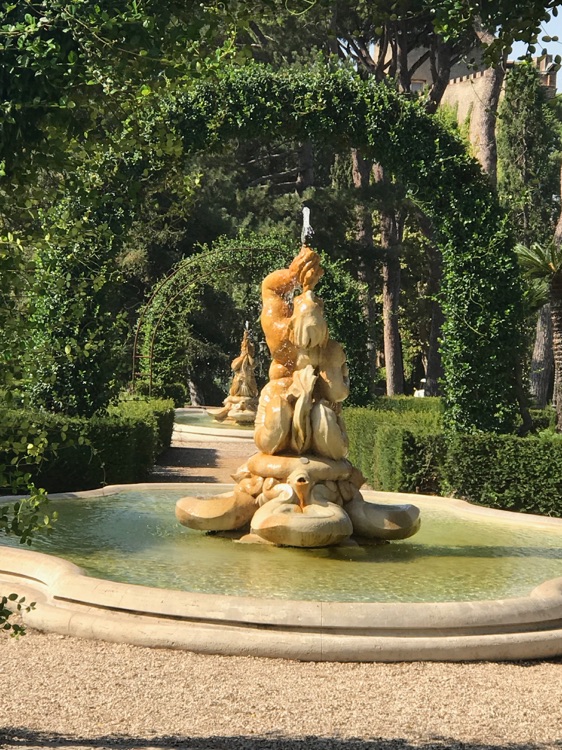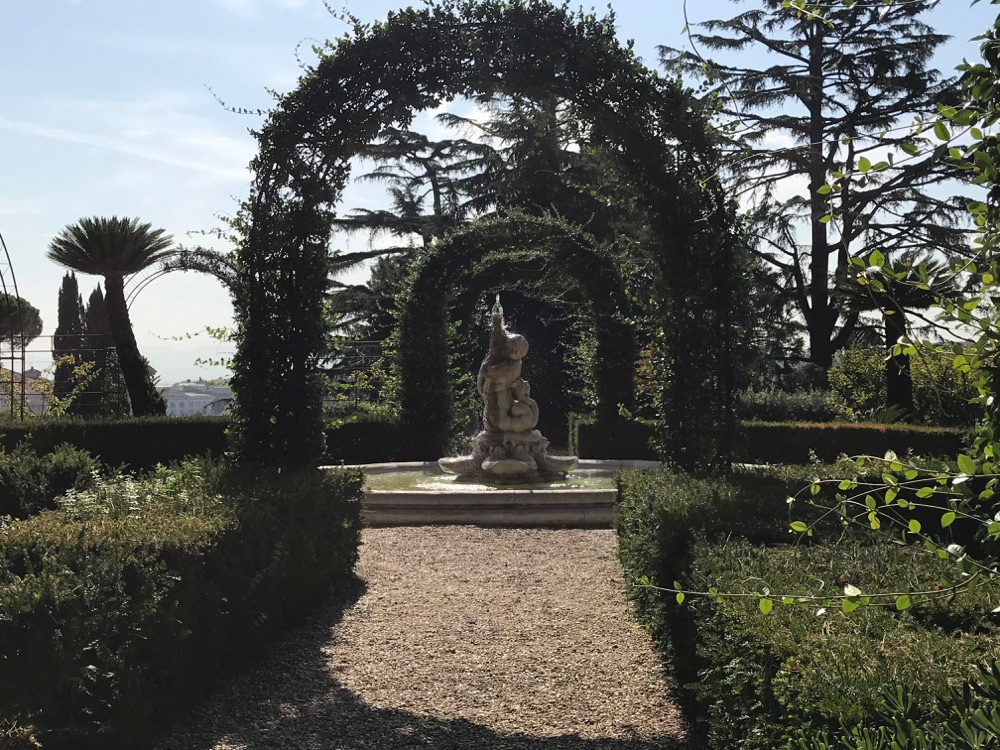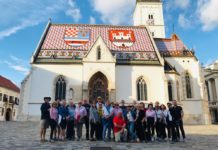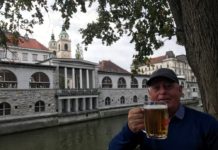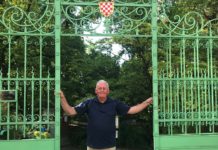Monday morning we went to the Vatican to see the Pope’s garden, which covers about 60 acres. It is located behind the Vatican buildings which means you get a very good close up view of St. Peter’s dome from the garden from a different angle.
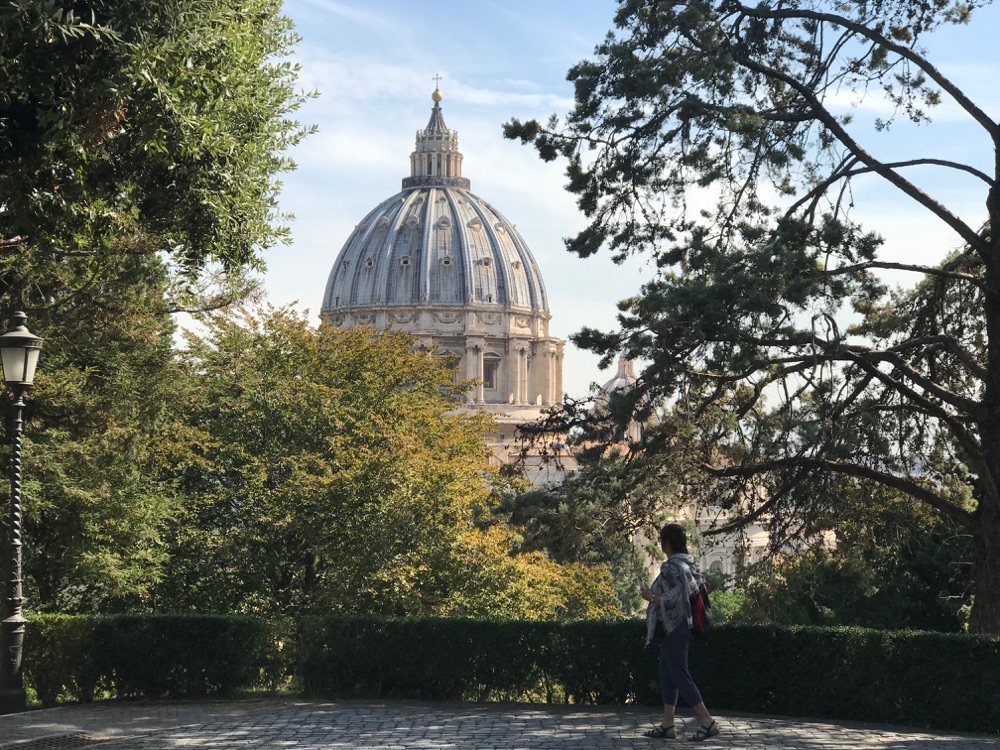
I had no expectations as we entered the garden complex through the same entrance that visitors use to go to the Vatican Museum to see the Sistine Chapel and wonders of the museum, such as the Raphael Room and the Belvedere Courtyard.
The Vatican guide showed us the garden in three parts – first the English section, followed by the Italian section and finally the French section and rose garden.
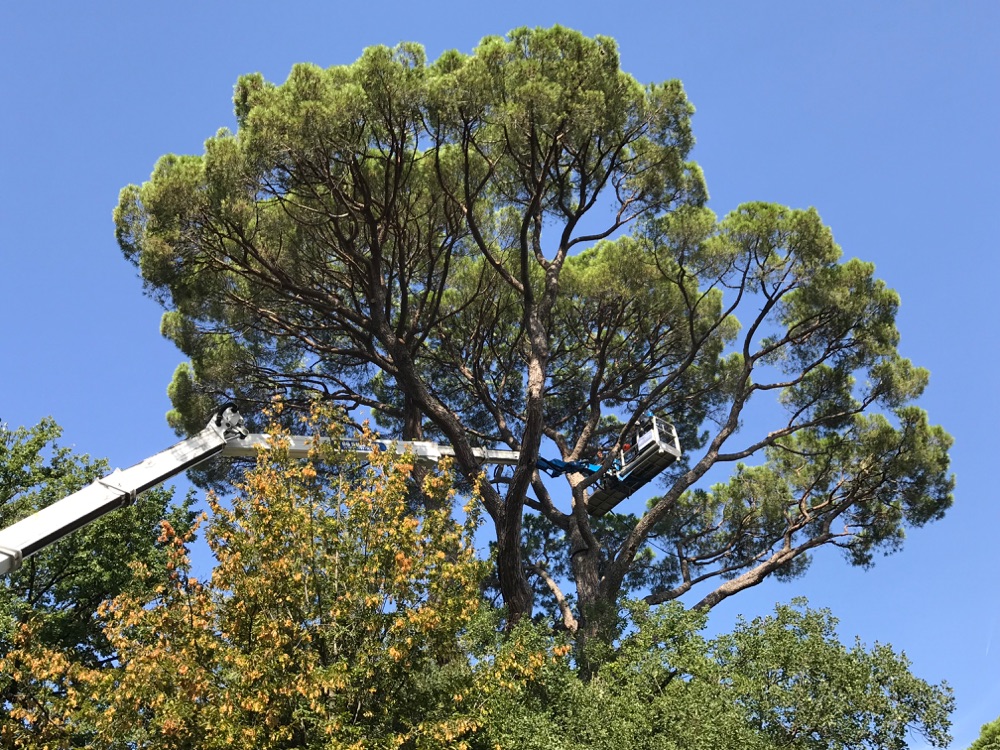
I can’t say I saw a huge difference in the style and I certainly didn’t see much that would make the “English garden” instantly recognizable, but the guide did talk about what an influential movement the English style was and how it sweep through Europe.
The most impressive section to my eyes was the Italian garden with its formal, clipped patterned parterres.
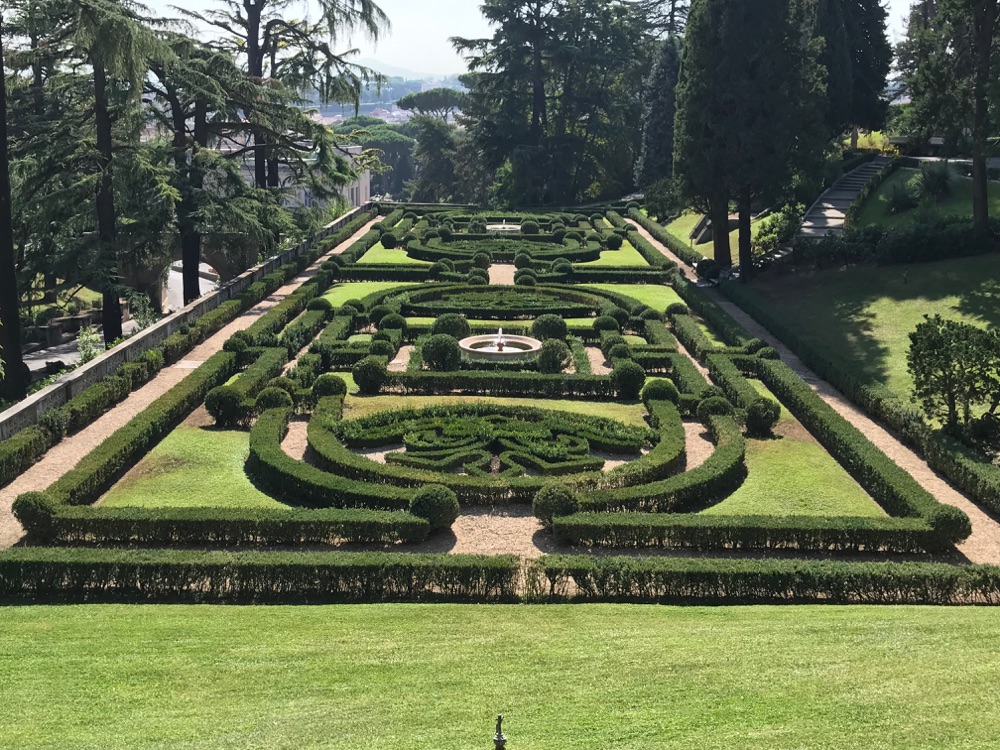
Beautiful umbrella pines – the signature tree of Rome with its very distinctive parasol shape – can be seen everywhere along with cypresses, yuccas, bougainvillea, oleander and some specialty trees, such as the cockspur coral tree from Argentina.
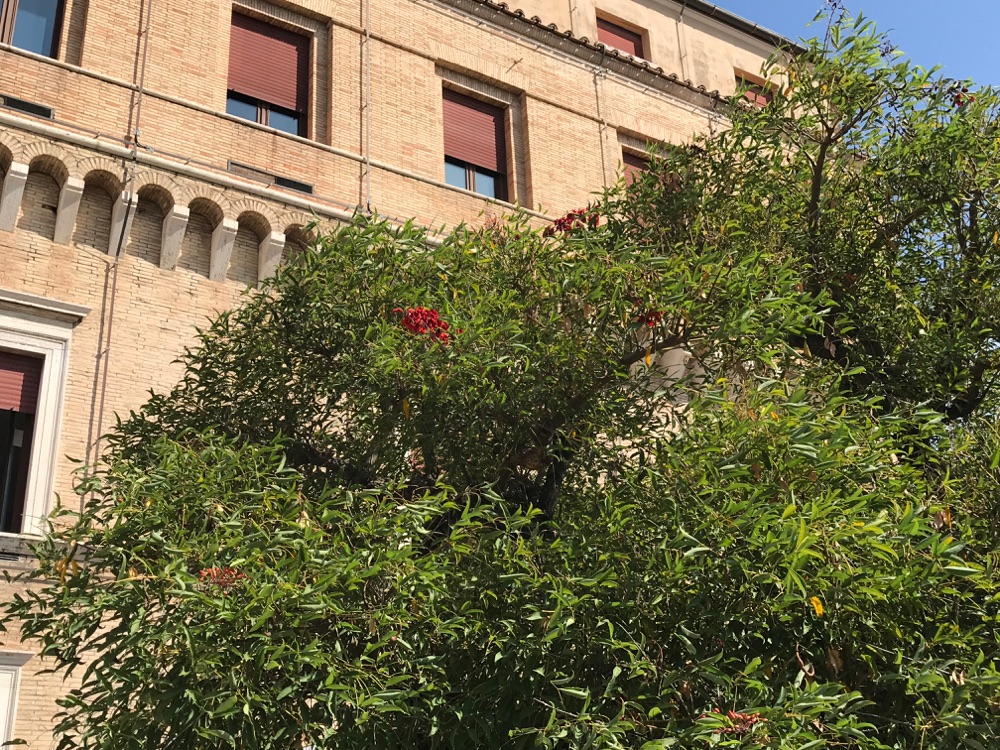
In some spots, you can hear the squawk of green parrots as they fly into palm trees.
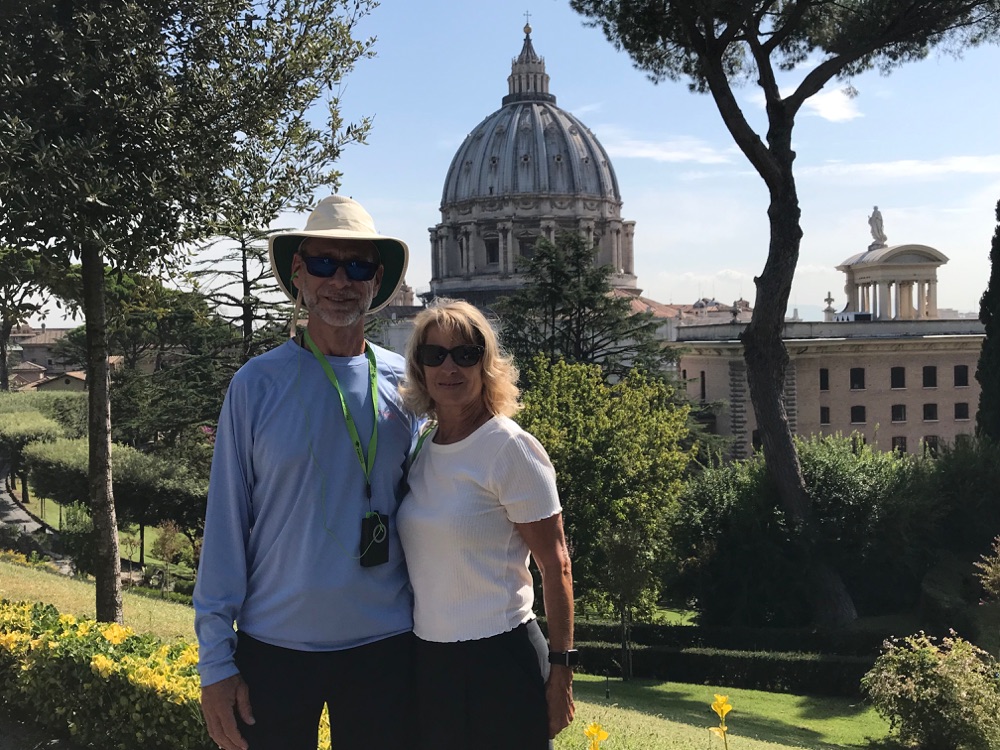
However, the rose garden area with its stunning views of the dome of St. Peter’s and key Vatican buildings is arguably the most exciting part of the garden along with the Saint John’s Tower (Torre San Giovanni) and a long terraced walkway with its sensational close up views of the basilica’s dome.
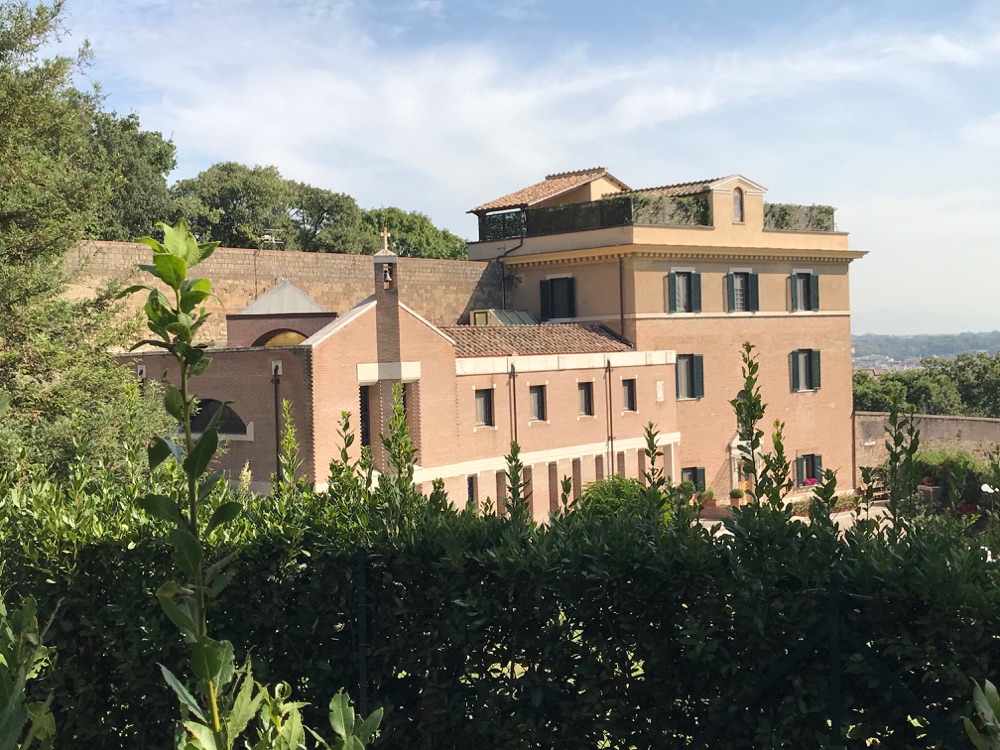
We also saw the residence where Pope Benedict moved when he retired.
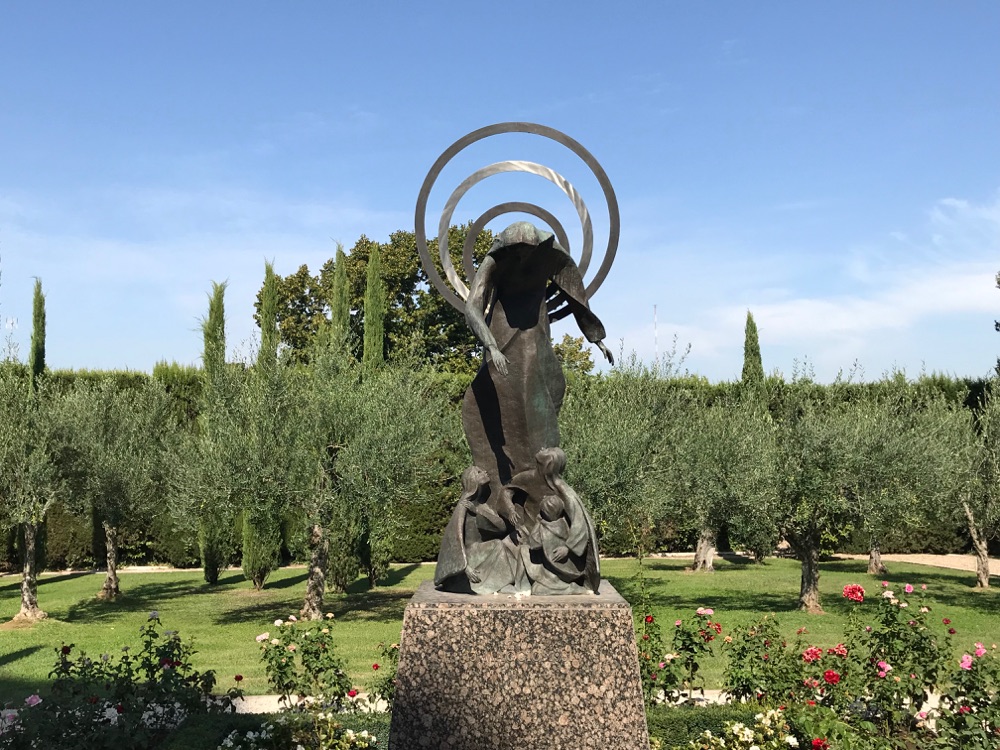
We were shown a very lovely olive garden and some attractive individual features such as a frog pond, apparently a favourite with Pope Benedict, plus a cool gazebo with a circle of large terracotta jars and a reproduction of the Lourdes Grotto in France.

There are also various religious statues placed throughout the garden. Most seemed to celebrate moments involving appearances of the Virgin Mary but there are also some secular and pagan images of Roman gods, such as Apollo, and caesar busts.
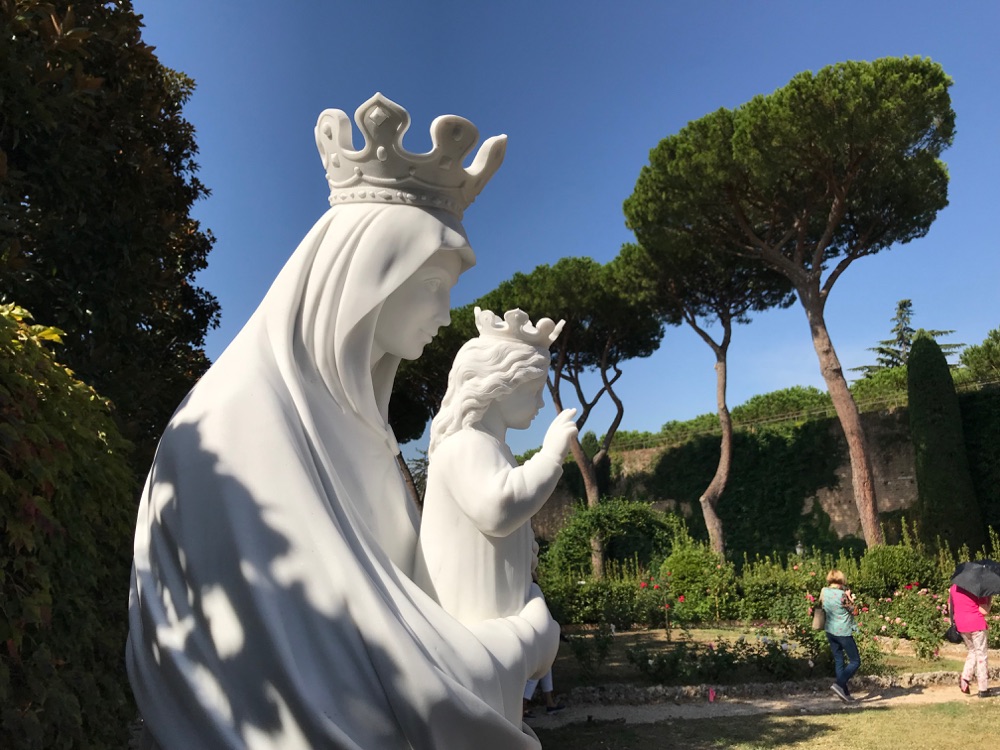
You can visit the garden in two ways – by walking it with a guide the way we did, which takes about 90 minutes and involves walking up hill until you reach rose garden area, or you can ride a small bus.
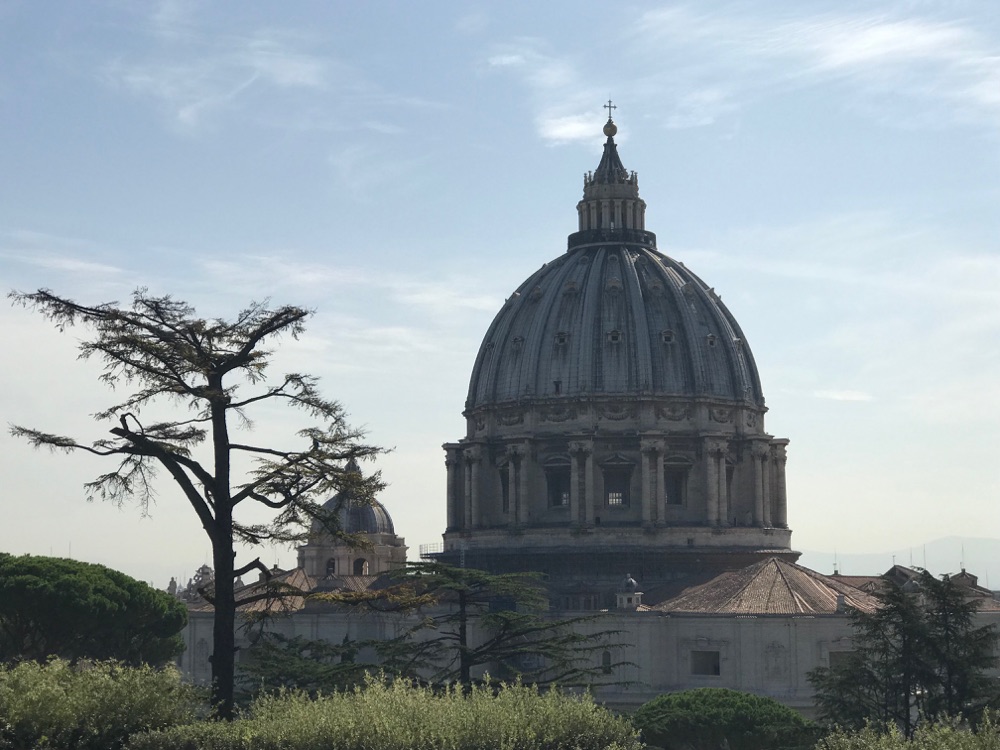
However, once on the bus, you are not allowed to get off and walk into the gardens and the encounter is naturally less intimate.
Walking is what I would recommend. You can walk slowly and take your time to reach the top – above 200 feet above sea level – after which, of course, it is then all down hill. Even some people with a walking-challenge did this without complaint.
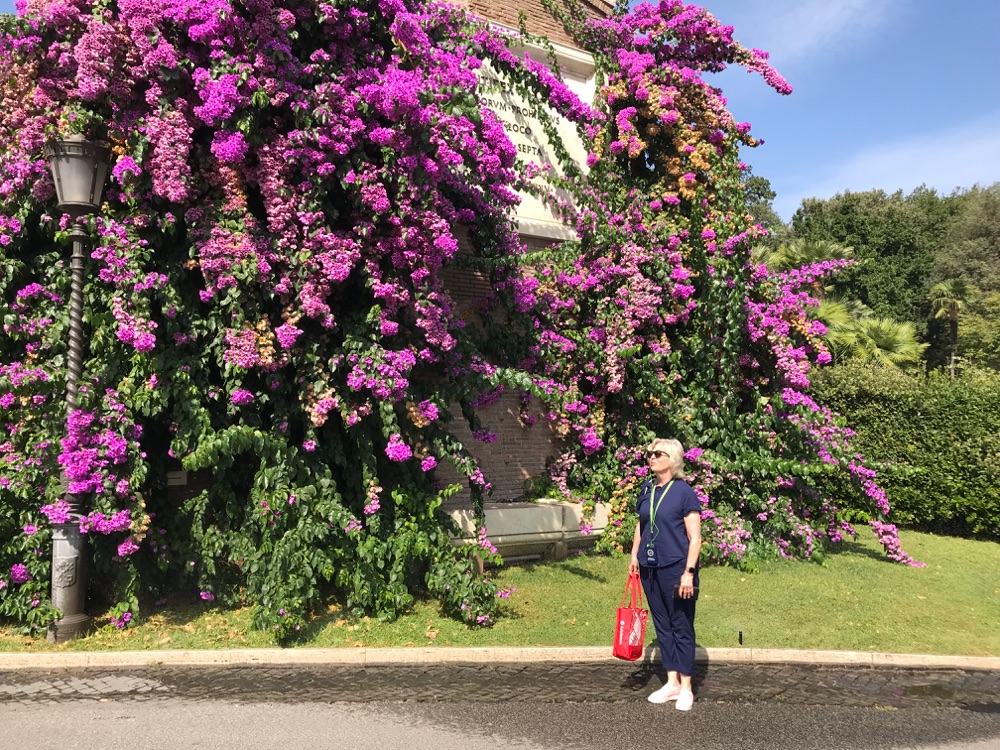
In the evening, we returned to the Vatican area for a rooftop party and banquet dinner on the rooftop garden of a local hotel.
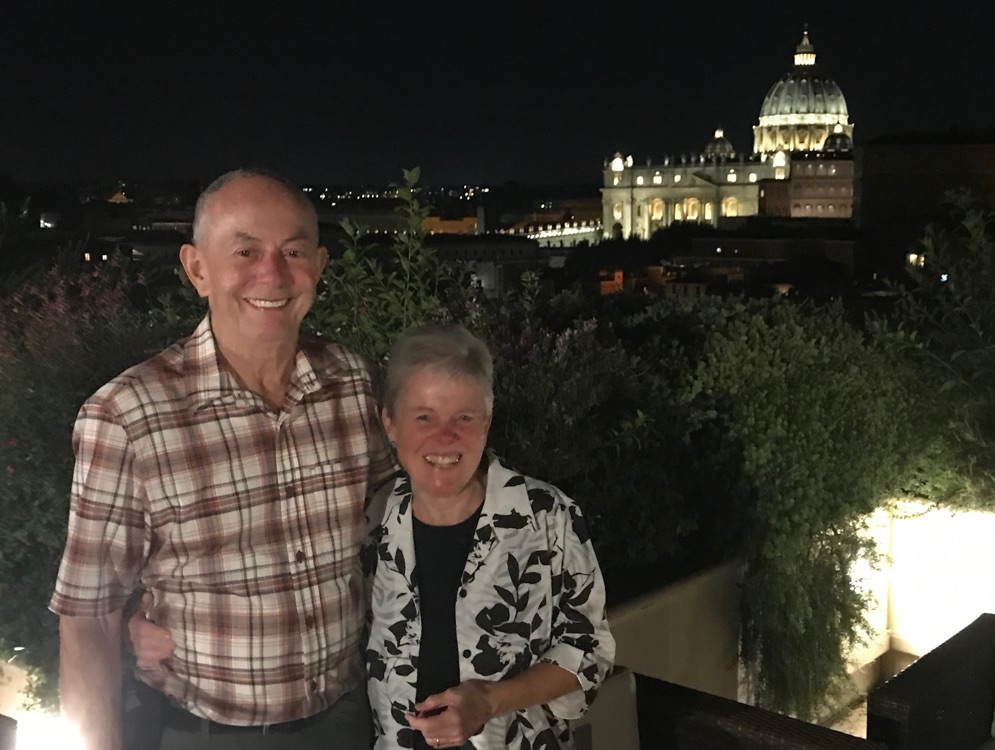
From the rooftop, we had a first-class view of St. Peter’s and Castel Sant’ Angelo, both superbly lighted to make them standout out as beacons of loveliness in against the night sky.
It was a warm, clear night and there was a terrific moon (waning gibbous but 96 per cent illuminated, making it virtually a full moon).
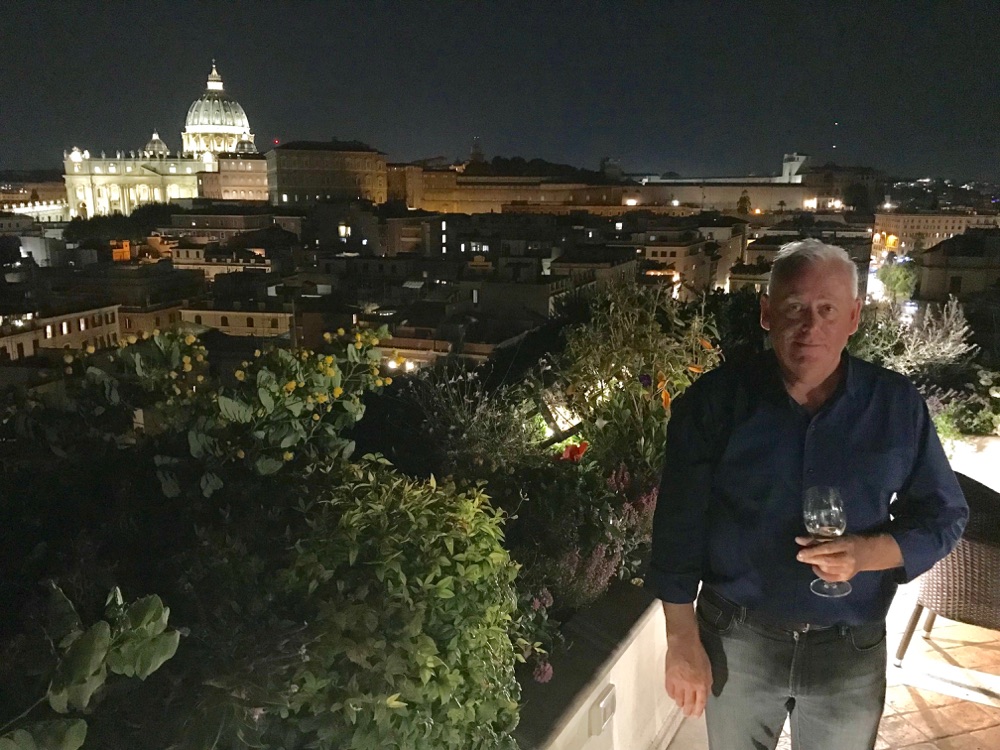
Music and the non-stop flow of delicious wine and plates of food made the party a hit and we stayed longer than planned and allowed our bus driver to go home and we all took taxi home – a short ride back to our hotel on the Via Veneto.
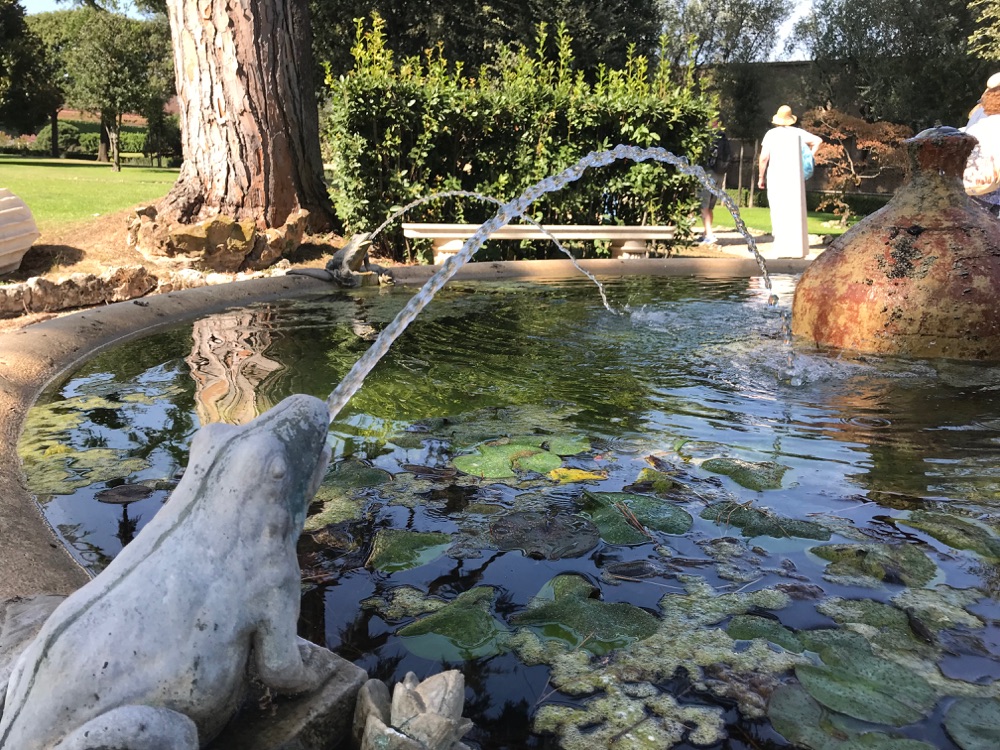
Tomorrow we will head out of Rome up to Umbria to see more gardens and visit more wonderful towns and places of interest.
